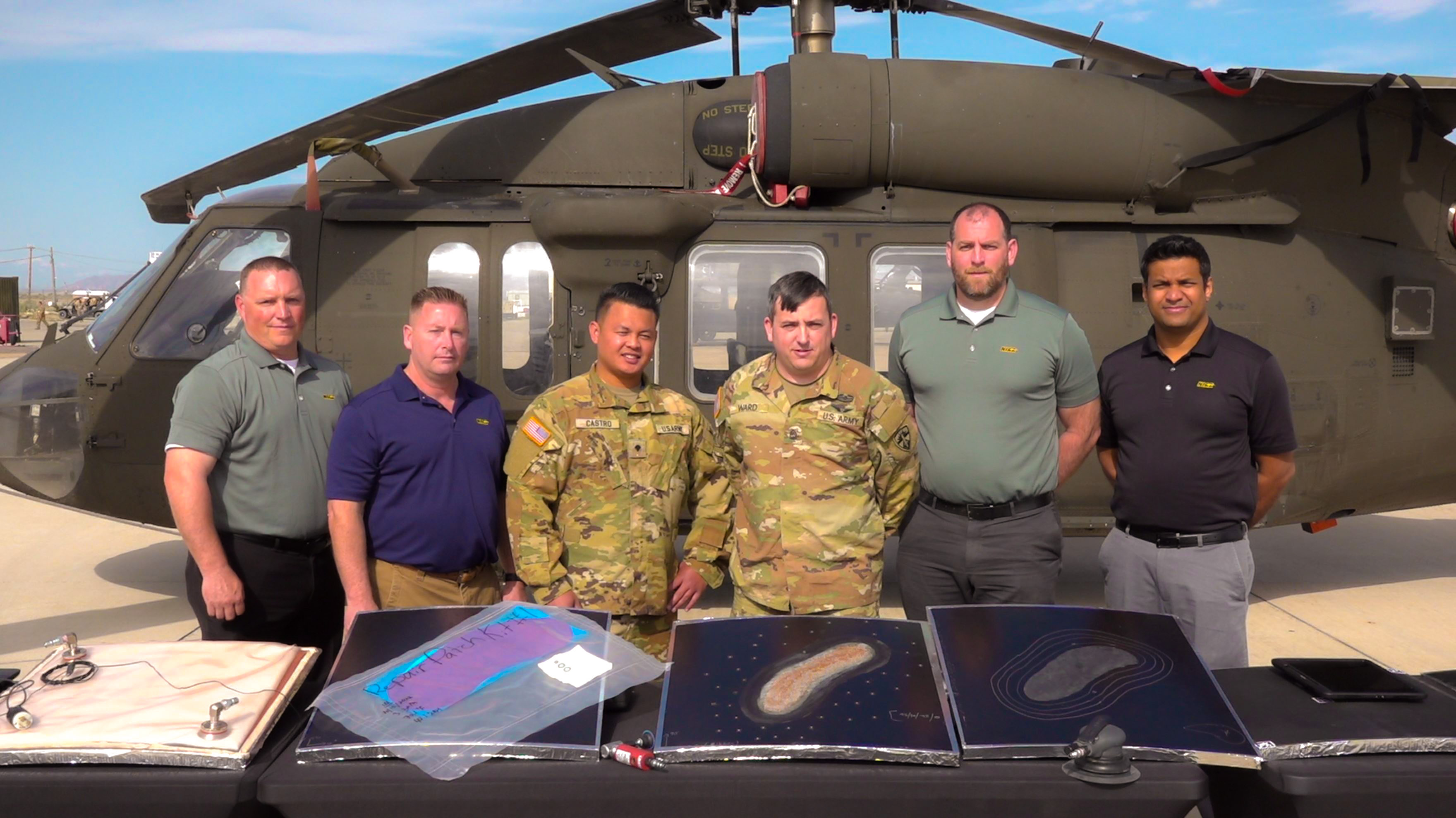Wichita State University’s National Institute for Aviation Research (NIAR) recently participated in the Army Futures Command (AFC) Future Vertical Lift Cross-Functional Team‘s Experimental Demonstration Gateway Event (EDGE).
The event, which the Army hosts in order to assess new tactics, technologies, and interconnecting architectures, took place over a three-week period in April and May at the Dugway Proving Grounds in Utah.
“NIAR was very excited and honored to be selected as a technology presenter at the event and we look forward to future collaboration with the Army and the FVL program,” said Royal Lovingfoss, NIAR director of advanced materials and processes.
During EDGE 22, NIAR presented two demonstrations: a detailed composite material repair process that can be deployed in the field and at repair depots; and a digital twin-based virtual reality training system.
The composite repair demonstration involved damage inspection, removal of damaged material, repair procedure, and the final repair outcome – exhibiting how NIAR’s novel repair process is able to save time, money and other resources to return the damaged aircraft back into service, making the warfighter more effective. The demonstration focused on the composite materials currently being used on the Black Hawk helicopter, but could also be used on the Chinook, Apache, and other future vertical lift aircraft.
The process involves the use of a thermography camera to inspect the damaged area to ascertain severity. This image is attached to the digital twin of the aircraft in a dedicated server location. Using an iPad, iPhone, or other smart device, the technician is able to project the damaged area onto the exterior of the damaged part, allowing the technician to trace out the detailed damage outline onto the part for proper material removal.
After removing the damaged material, the technician uses a 3D scanner or light scanner to create a CAD drawing of the area in need of repair. This CAD drawing is also attached to the digital twin of the aircraft. It is then used by the repair depot to create an exact patch match.
When the technician receives the custom patch, it has the proper material, adhesives, fiber orientation, and design – eliminating guesswork when placing it on the damaged area. The technician bags the repair area with the designated bagging materials, which may include a disposable breather and vacuum bag, as well as reusable hot pad, thermocouples, vacuum lines and vacuum ports.
The bagged repair is then cured after being hooked to the portable control system. The cured repair area is ready for flight in roughly six to eight hours depending on the material used and the associated cure process.
“Throughout the demonstration expo, many Army personnel were allowed to walk through the steps described above to help them get a feel and understanding for the ease and speed at which this type of repair scenario can be accomplished,” said Lovingfoss. “It was also noted that the cost of purchasing the equipment needed was low and that the Army already had some of the equipment on hand, decreasing the learning curve and up-front expenses.”
During the event, NIAR trained an enlisted Army Specialist from the 82nd Airborne Division on the process. He was able to quickly understand the steps and replicate the process when explaining to his superiors, proving that the process can be learned quickly, eliminating complicated training programs.
“The process is simple, uses materials and equipment that the Army is familiar with, and puts aircraft back into service in a much timelier manner as compared to processes being used now,” said Retired Colonel Mike Williams, a former Apache pilot.
The second demonstration featured a Virtual Reality (VR) training simulation built using the digital twin of a Black Hawk helicopter. The simulation guided U.S. Army personnel through the replacement of a failed part on the aircraft’s horizontal stabilator.
For the purposes of the event, the training simulation was kept to an ideal time of around five minutes. In that time, NIAR was able guide users through their first VR experience, demonstrate the intuitive nature of the controls, and successfully communicate the power of VR as a training platform.
“A particularly memorable experience was the privilege of training an Army Specialist from the 82nd Airborne Division,” said Eric Corey, NIAR research associate in eXtended Reality. “They were already familiar with VR technology from recreational use and adapted quickly to its use as a training aid during the demo. Once the user knew the controls, they were able to navigate their way through the simulation with no assistance.”
The hardware used in the demonstration is readily available as off-the-shelf products and is more commonplace in younger enlisted member’s lives. This makes adoption, acquisition and sustainment of the hardware more practical.
From a software perspective, the development of the VR application required minimal effort and can be tailor made to provide a more robust and user-friendly platform to create additional training simulations. The techniques used to create the VR application can also be used to provide Augmented Reality (AR) and more traditional 2D/3D supporting applications.
EDGE22 is part of AFC’s Project Convergence Campaign of Learning and builds on lessons learned from previous experimentations at our nation’s Western Test Ranges, including EDGE21 at Dugway and PC21 at Yuma Proving Ground, Arizona.
About NIAR
Wichita State University’s National Institute for Aviation Research provides research, testing, certification and training for aviation and manufacturing technologies. Established in 1985, NIAR has a +$190 million annual budget; 1,100 employees and nearly 1.6 million square feet of laboratory and office space in six locations across the city of Wichita, the Air Capital of the World. NIAR laboratories include Additive Manufacturing, Advanced Coatings, Advanced Manufacturing, Ballistics/Impact Dynamics, Composites/Advanced Materials, Crash Dynamics, Digital Twin, Engineering Design/Modification, Environmental/ Electromagnetic Test, Full-Scale Structural Test, Nondestructive Test, Reverse Engineering, Robotics/Automation, Virtual Engineering, eXtended Reality and the Walter H. Beech Wind Tunnel.


